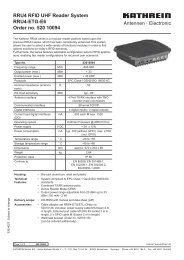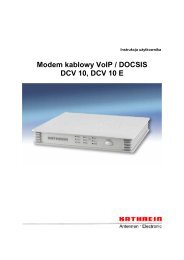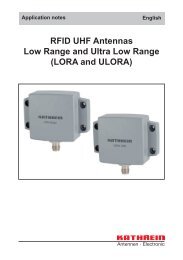Basic Antenna Principles for Mobile Communications
Basic Antenna Principles for Mobile Communications
Basic Antenna Principles for Mobile Communications
You also want an ePaper? Increase the reach of your titles
YUMPU automatically turns print PDFs into web optimized ePapers that Google loves.
<strong>Mobile</strong> <strong>Communications</strong> - <strong>Antenna</strong> Technology<br />
1. Introduction<br />
In the last few years a large technological jump has taken place in the field of mobile communications<br />
due to the introduction of new mobile communication networks (GSM/PCN). The number of subscribers<br />
worldwide has risen to over 150 Million. Fig. 1 shows an overview of the mobile communications services<br />
and the relevant frequency ranges within Germany alone.<br />
The requirements on the antennas needed <strong>for</strong> the ever expanding networks are becoming continually<br />
higher:<br />
– strictly defined radiation patterns <strong>for</strong> a most accurate network planning.<br />
– growing concern <strong>for</strong> the level of intermodulation due to the radiation of many HF-carriers via<br />
one antenna.<br />
– dual polarization<br />
– electrical down-tilting of the vertical diagram.<br />
– unobtrusive design.<br />
The following essay will give an insight into antenna theory in general, as well as the most important<br />
types of antennas and the special methods used <strong>for</strong> GSM/PCN systems.<br />
– 3 –

















